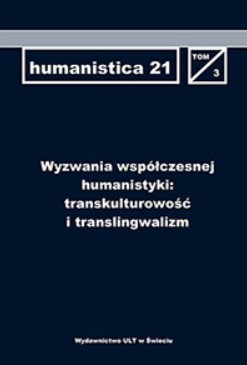Проспективная семантика в контексте транскультуральности
Prospective semantics in the context of transculturalism
Author(s): Evgenija ArzievaSubject(s): Epistemology, Semantics, Sociology of Culture, Ontology
Published by: Wydawnictwo ULT w Świeciu
Keywords: prospective semantics; possible world; artistic text; transculturally; temporal syncretism;
Summary/Abstract: This article is devoted to the study of the transcultural zone and the prospective semantics formed on its basis, embodying possible worlds in the artistic text. The transformation of cultural paradigms gives rise to a peculiar phenomenon, which in the humanities is referred to as transculturally. In this context, of interest is the prospective semantics, which incorporates two interconnected temporary layers: the past, embodying favorable conditions for the implementation of future actions; and future, transmitting the committed action as an effective result of the indicated conditions. The position of the epoch of transculturally in the form of “not here and not there” or “both here and there” at the language level provokes a sufficient number of language units embodying possible worlds through the prism of prospective semantics in the diversity of its forms and structures; and also generates semantic transformations of linguistic units, which is especially evident in literary texts. The significance of the definition of semantic models based on the prospect of virtual reality, captured in the artistic text, and the cultural context that contributes to their formation, determines the relevance of this study. The purpose of this article is to establish the range of verbal means representing the ontological, epistemic and axiological aspects of the prospective semantics of possible worlds in an artistic text. The basis of the factual material is a storyline of the works, denoting a transcultural zone, and a complex of language units, representing possible worlds based on prospective semantics. Sources of factual material were works of contemporary literature of various genres. The choice of sources is determined by the identity of the following facts: 1) in each of the marked works there are two time plans and their transformation are clearly visible, which provides an analysis of the transcultural zone; 2) two spatial plans are marked as possible parallel worlds with a projection on the prospective semantics; 3) in their storyline, there is an element of reincarnation (transformation) of the subject up to the work of turnover, which is also characteristic of transculturally as a specific phenomenon of the transition period.
Journal: humanistica 21
- Issue Year: 3/2019
- Issue No: 3
- Page Range: 141-168
- Page Count: 28
- Language: Russian

